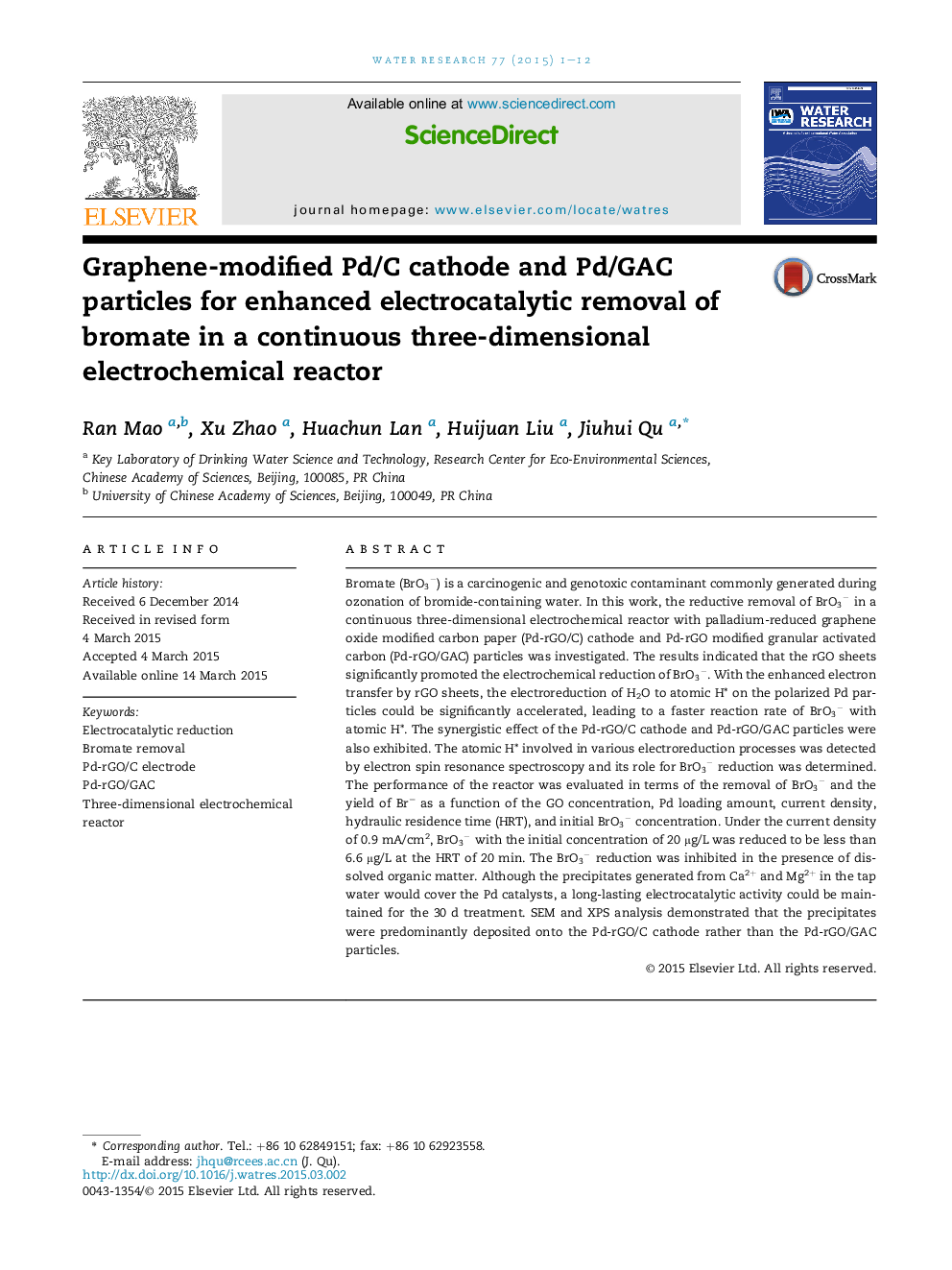| Article ID | Journal | Published Year | Pages | File Type |
|---|---|---|---|---|
| 4481126 | Water Research | 2015 | 12 Pages |
•Electrochemical removal of −BrO3BrO3− was achieved in a three-dimensional reactor.•Pd-rGO modified carbon paper was used as cathode.•Pd-rGO modified GAC particles were used as fixed filler of the cathode cell.•rGO facilitates the catalytic reduction on the cathode and particles.
Bromate (−BrO3BrO3−) is a carcinogenic and genotoxic contaminant commonly generated during ozonation of bromide-containing water. In this work, the reductive removal of −BrO3BrO3− in a continuous three-dimensional electrochemical reactor with palladium-reduced graphene oxide modified carbon paper (Pd-rGO/C) cathode and Pd-rGO modified granular activated carbon (Pd-rGO/GAC) particles was investigated. The results indicated that the rGO sheets significantly promoted the electrochemical reduction of −BrO3BrO3−. With the enhanced electron transfer by rGO sheets, the electroreduction of H2O to atomic H* on the polarized Pd particles could be significantly accelerated, leading to a faster reaction rate of −BrO3BrO3− with atomic H*. The synergistic effect of the Pd-rGO/C cathode and Pd-rGO/GAC particles were also exhibited. The atomic H* involved in various electroreduction processes was detected by electron spin resonance spectroscopy and its role for −BrO3BrO3− reduction was determined. The performance of the reactor was evaluated in terms of the removal of −BrO3BrO3− and the yield of Br− as a function of the GO concentration, Pd loading amount, current density, hydraulic residence time (HRT), and initial −BrO3BrO3− concentration. Under the current density of 0.9 mA/cm2, −BrO3BrO3− with the initial concentration of 20 μg/L was reduced to be less than 6.6 μg/L at the HRT of 20 min. The −BrO3BrO3− reduction was inhibited in the presence of dissolved organic matter. Although the precipitates generated from Ca2+ and Mg2+ in the tap water would cover the Pd catalysts, a long-lasting electrocatalytic activity could be maintained for the 30 d treatment. SEM and XPS analysis demonstrated that the precipitates were predominantly deposited onto the Pd-rGO/C cathode rather than the Pd-rGO/GAC particles.
Graphical abstractFigure optionsDownload full-size imageDownload high-quality image (247 K)Download as PowerPoint slide
